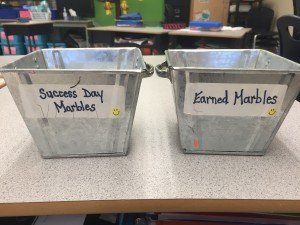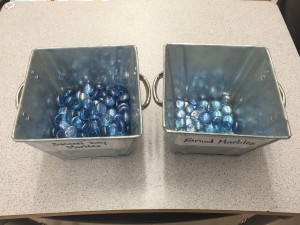Over the past several weeks the majority of my research has focussed on how good teaching practices can help minimize instances of disruptive behaviour within the classroom. Although I feel as if my inquiry has opened my eyes to so many ways that I can be a better teacher for all of my students, I still found myself being curious about one thing — student internal motivation. How can I get my students to want to choose to behave appropriately in the classroom and in social situations without teacher encouragement, reminders, and presence? In other words, how can I get my students to act without prompting?
Upon reading through a variety of articles on internal motivation I stumbled across one article that I found to be particularity enlightening. In the article “How To Build Classroom Community: It’s Not What You Think” author Michael Linsin discusses how the process of building a strong classroom community can help improve both student motivation and student behaviour. Within the article former fourth-grade teacher Michael Linsin notes that, “…the whole idea of having a strong [classroom] community is that we want our students to act without prompting. We want teamwork and camaraderie to be who they are and how they choose behave, not something foisted upon them by the teacher” (2009, p.1). Linsin asserts that when students act in a kind and appropriate way it is not because there is a strong classroom community, but rather, it is the result of a strong classroom community (2009). Specifically, it is stated that in order for students to properly build a strong classroom community their teacher must first create an enticing goal, then make sure that every class member is needed to achieve the goal, and finally, make sure that there is a chance of failure (Linsin, 2009). Overall, the article outlines that if the above three conditions are implemented correctly by the teacher, the close bonds that students will develop through these repeated experiences will carry over to everything they do in the classroom, including how they choose to behave (Linsin, 2009).
At this point in my inquiry research, this idea speaks volumes to me. Personally I love how this article approaches the topic of disruptive behaviour from a slightly different perspective, a perspective in which the teacher provides the right conditions for building a strong classroom community, but where the students are responsible for building the camaraderie, teamwork, and togetherness that is necessary for success. Furthermore, I find this perspective to be refreshing but also promising.
This idea of building community through a collective goal to improve student behaviour is something that I have been lucky enough to experience first-hand this past year. In my practicum class there are 2 buckets of marbles known as the ‘success day marbles’. In one bucket there are 100 marbles, each one with the potential to be earned by the class when they demonstrate collective teamwork. The second bucket is where each earned marble is placed when they entire class successfully accomplishes a goal together. Once all 100 marbles have transferred from the first bucket to the second it signifies that students within the class have successfully worked together to earn an entire day celebrating their teamwork. On this day of celebration, the classroom will be transformed into a giant blanket-fort and there will be freshly popped popcorn, hot chocolate, candy, and projected movies within the classroom-made fort. This day will be a time for the class to celebrate their collective achievements, celebrate camaraderie, and develop relationships.
As an observer in my practicum class I always thought that the ‘success day marble buckets’ were a great idea to help motivate students, but now I understand that they are so much more then that. In only a few short weeks I will begin my extended practicum, and in a sense, I will be put to the test. Although I am unable to say what challenges and successes I will encounter over these next several months, I can confidently say that I am so thankful for the tools and ideas I have acquired though researching my inquiry topic of disruptive behaviour.
Linsin, M. (2009). How to build classroom community: It’s not what you think. SCM, Online.


The “success day” idea is a great way to build teamwork and a sense of community. Are students clear about ways to earn a marble, how are the criteria outlined? Will you continue with the project? You may notice after the spring break and with you being in the class every day that the students will need a reminder of the criteria and this is something that you could do as a way to create your own place in the classroom community.